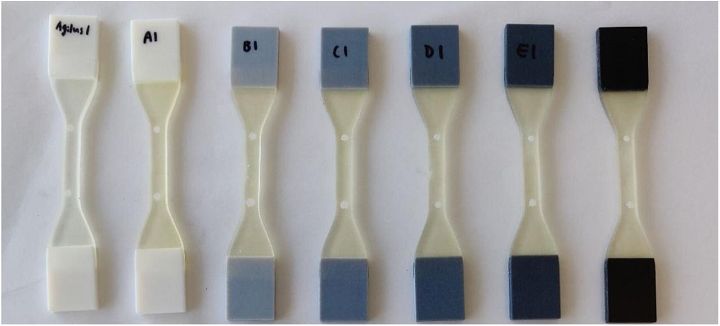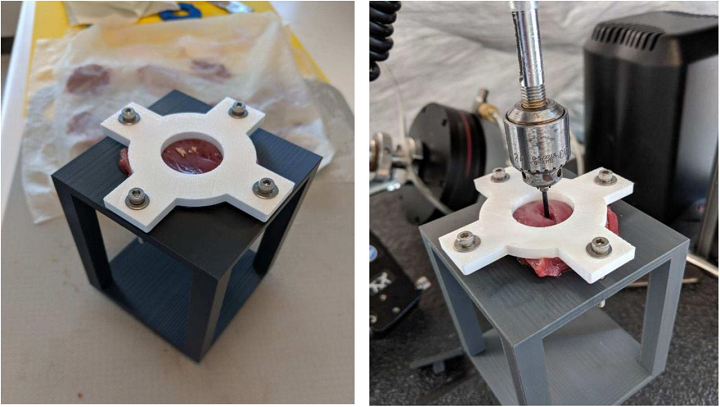Medtronic: Comparing Stratasys Digital Anatomy 3D Printing Materials with Porcine Myocardium
In October, Stratasys released its Digital Anatomy Solution, which combines three materials with its J750 printer and custom software inside GrabCAD so users can turn 3D scans into 3D printed anatomical parts for training and surgical planning purposes. This solution is extremely helpful, as the Digital Anatomy materials very closely mimic the mechanical properties of human tissue.
 Researchers Leah Severseike, Vania Lee, Taycia Brandon, Chris Bakken, and Varun Bhatia from medical device company Medtronic wanted to evaluate the Digital Anatomy Materials that mimicked myocardial tissue; the myocardium, made up of heart muscle cells, is between the outer layer of the heart wall (epicardium) and the inner layer (endocardium).
Researchers Leah Severseike, Vania Lee, Taycia Brandon, Chris Bakken, and Varun Bhatia from medical device company Medtronic wanted to evaluate the Digital Anatomy Materials that mimicked myocardial tissue; the myocardium, made up of heart muscle cells, is between the outer layer of the heart wall (epicardium) and the inner layer (endocardium).
They wrote the paper “Polyjet 3D printing of tissue-mimicking materials: how well can 3D printed synthetic myocardium replicate mechanical properties of organic myocardium?” in an attempt to quantify and compare application specific mechanical properties of the Digital Anatomy materials with equivalent porcine tissue.
“Conventionally, the material properties of 3D printed anatomical models have often been similar only in form and not in mechanical response compared to biological tissue,” the team wrote.
“Work was done to evaluate Digital Anatomy myocardium under axial loading for comparison with porcine myocardium regarding puncture, compliance, suturing, and cutting performance.”
They chose porcine myocardial tissue due to its availability, and similarity to human tissue, and obtained the hearts from a pre-clinical research facility and a butcher. They were dissected to isolate the portions shown in the image above.
Test samples of the five myocardial Digital Anatomy materials were batch printed in the Type IV dog bone format, and put through tensile, compliance, puncture, and suture testing, in addition to qualitative cutting comparisons.
“In general, these Stratasys materials have varying degrees of compliance, and are printed as a shell of Agilus material (Hardness = 30A) filled with a mix of TissueMatrix (Hardness = 00A) and Agilus in a gyroid structure infill pattern, which is varied to change compliance,” the team wrote.
The results of the tensile tests showed that the moduli of the 3D printed materials ranged from 0.262 to 0.536 MPa. Because they were “highly repeatable,” the researchers are very confident that the samples will behave the same way each time.

3D printed dog bones with Vero grips. L-R: Agilus, Myocardium A*, Myocardium 1, Myocardium 2, Myocardium 3, Myocardium 4, Myocardium 5, and Myocardium B*.
The Digital Anatomy myocardium was either stiffer, or within the same range, as the porcine myocardium in terms of compliance testing, which “analyzed up to the first 10 mm beyond the pre-load” from the puncture tests. However, when it came to to the suture and puncture tests, the porcine samples performed better.
In order to mimic boundary conditions in the heart, puncture testing was performed on two-inch diameter tissues samples, which were clamped over one-inch holes. Digital Anatomy’s Myocardium 1, 4, and 5 had the most diverse results, and so were tested again in order to “quantify their mechanical properties.”

Test fixture on left. The sample is clamped between an elevated plate with a hole and a top plate using bolts. On the right, the fixture and sample is in use on an Instron, with a constrained pin attached to the load cell.
The sutures had higher friction forces during needle insertion and cutting, and tore through the 3D printed material more easily, which showed that the porcine tissue was stronger; however, this was partially due to the suture setup that was to help prevent preliminary tearing. Both the porcine and the Digital Anatomy myocardium had similar failure mechanisms, seeing delamination before the final layer of the sample was punctured. The stiffness of the varying Digital Anatomy materials varied, but all were much stiffer than porcine myocardium.
Generally speaking, even with the differences, four expert reviewers who helped with the study determined that the 3D printed Digital Anatomy myocardium had some positive comparisons to the porcine version.

(Left) Porcine myocardium failing during the suture test. Note the hole forming as the suture pulls on the epicardium. (Right) Myocardium 1 after the suture pull test. The bubble around the cut shows the delamination of Agilus before failure.
“Despite some limitations, the myocardium Digital Anatomy material can be used to configure structures with similar mechanical properties to porcine myocardium in a repeatable manner, making this a valuable research tool,” the researchers concluded.
“The reviewers thought the printed myocardium needed to be more compliant, more lubricious, and tougher in order to mimic real myocardium. They said the feel of the Digital Anatomy was getting close to real myocardium but was lacking some compliance. They also thought better lubricity would reduce the additional drag experienced when suturing and cutting, and they mentioned that materials need to be tougher in order to accommodate more realistic suture techniques and holding forces. However, for applications that do not require cutting or suturing they thought the compliance of Digital Anatomy could be a useful resource for preliminary bench testing.”
Discuss this and other 3D printing topics at 3DPrintBoard.com or share your thoughts below.
Subscribe to Our Email Newsletter
Stay up-to-date on all the latest news from the 3D printing industry and receive information and offers from third party vendors.
Print Services
You May Also Like
New Business: Temporary, Migratory, & Modular 3D Printed Architecture
If we look at potentially emerging 3D printing businesses, then architecture has not been fully explored. Yes, there is a lot of house 3D printing going on worldwide. From deployable...
3D Printing News Briefs, April 19, 2025: Material Extrusion Standard, Metal Powder, & More
In today’s 3D Printing News Briefs, we’re covering a proposed standard for material extrusion, before moving on to business and metal powder. We’ll end with a commercial store’s robotic 3D...
Japan Unveils World’s First 3D Printed Train Station
Japan is now home to what we believe is the world’s first train station built with 3D printing technology. Located in Arida City, just south of Osaka, the new Hatsushima...
restor3d Raises $38M to Expand 3D Printed Orthopedic Implants
Backed by $38 million in new funding, restor3d is pushing ahead with the launch of four personalized implant lines, set to roll out in 2025 and 2026. This latest venture...




























